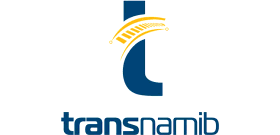 TransNamib told to allow private operators to utilise the rail network
TransNamib told to allow private operators to utilise the rail network
The Parliamentary Standing Committee on Economics and Public Administration has advised Namibia’s railway company, TransNamib, to explore the possibility of allowing private operators to utilise the rail network through concession agreements.
The committee’s position was formed following visits to railway infrastructure in the country to assess its management and maintenance. They believe this approach could invigorate the rail sector, enhance efficiency, and stimulate competition, ultimately leading to improved services.
According to the report, TransNamib’s path to success involves implementing a comprehensive five-year plan that aims to increase the tonnage transported from 1.5 million to 4 million tonnes per annum, significantly boosting revenue and profitability.
The current challenges faced by TransNamib include poor infrastructure, a lack of rolling stock, and operational and maintenance issues. Locomotives in service are often beyond their expected lifespan, typically 50 to 60 years old, making them increasingly unreliable. The difficulty in procuring spare parts, coupled with long delivery times, impacts the efficiency and timeliness of service delivery.
Despite the procurement of 17 locomotives in 2017, only one is currently operational, mainly due to control system problems, a lack of spare parts, and insufficient knowledge transfer. TransNamib faces a yearly funding gap of N$135 million for spare parts and maintenance.
Certain routes are unprofitable, primarily due to their length and the absence of cargo for return journeys. Speed and tonnage restrictions due to poor railway line conditions contribute significantly to income losses. Additionally, issues such as sand ingress near Lüderitz necessitate daily cleaning efforts, further reducing route profitability.
The rail infrastructure is notably deteriorated, with frequent line breaks, especially between Kranzberg and Tsumeb. Only 24% of the railway network meets the SADC standard of 18.5 tonnes per axle load, a shortfall attributed to budgetary constraints and insufficient funding for railway improvements.
The report advocates for a comprehensive upgrade of the railway infrastructure to attract more businesses to TransNamib and ensure compliance with the SADC standard of a minimum of 18.5 tonnes per axle. This includes extending loop lines to accommodate longer air brake trains on the national network.
TransNamib’s fleet includes 78 locomotives and about 1500 wagons, which together transport approximately 1.5 million tonnes of cargo annually. The company aims to increase this capacity to four million tonnes within the next five years.
Daily, 23 to 26 locomotives are operational, though the ideal fleet size for optimal profitability and efficiency would be 34 locomotives. Currently, only 24 locomotives are operational due to equipment and spare parts shortages. The low number available is primarily due to their age, with most being 50 to 60 years old, leading to frequent breakdowns and a maintenance backlog that has persisted over the past decade.
